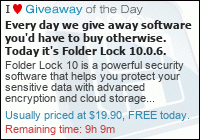A quick and cheap solution will be to move the Page File to a different partition, But, what can you do when your Page File is already in another partition and you have less than 5% of free space on your System or C partition. This is what I did for one of my customers that didn’t have the budget to buy another server and wanted a quick fast solution without bringing the server down while on production.
On a HP Proliant server with one array controller and 4 disks configured as a RAID 5 with a C and a D partition. We physically added a 72 GB hard drive in one of the empty HD slots while the server is running. The HP servers allow you to add a HD on the fly and it will automatically recognize that there is a new hardware in the bay.
Then, I launched the ACU (Array Controller Utility) under the Array Controller Configuration there is the original RAID5 array and the newly added HD unallocated and not part of the array.
The first task is to add the new hard drive to the existing array. For that, we select the existing array and on the right side there is an option to “Expand” the array.
This process could take hours and in some cases a couple of days. It depends on the hardware and the array controller memory cache. You need a minimum of 128MB Cache – I’ve seen 64MB been able to be expanded as well.
After this process has completed, and you could check the progress by refreshing the array status and it will display the percentage completed, there will be an option to “Merge” or “Extend”.
Now you need to Extend the array with the newly incorporate hard drive. This process is faster than the previous, but after this step is completed, you will see the unallocated free space on the Windows Disk Management MMC.
For this particular customer I decided to create two mount points. One for the Software Distribution folder and the other one for the Installer folder. These two folders are under the Windows directory or %systemroot%.
Now follow these steps in this order:
- Open the Task Manager and kill the wuauclt.EXE process by selecting it and click on end process.
- Then, open a CMD prompt and type: net stop "Automatic Updates"
- Open the Windows Explorer and navigate to the Windows or %systemroot% directory and rename both the “SoftwareDistribution” folder and the “Installer” to something like “SoftwareDistributionTEMP” and “InstallerTEMP”
- Now create two new empty folders labeled “SoftwareDistribution” folder and the “Installer” just as they were originally.
- Open the Windows Disk Management MMC if don’t have it open.
- Select the unallocated space and create a new Extended Partition with the all the available unallocated space.
- Within that new partition we now can create two new Logical Drives mount point formatted as NTFS and with 10GB in size each.
Note: The logical drives don’t need to have a drive letter assign. You want to specify the folder paths that these logical drives will be mounted as
- Finally, move the content or data inside the Temp folders to the original place.
Leave the rest of the unallocated space for future space needs.
At last we want to restore the Windows Automatic operations as normal. Type following command in the CMD prompt:
net start "Automatic Updates"
wuauclt /detectnow
Alessandro 01/02/2009







